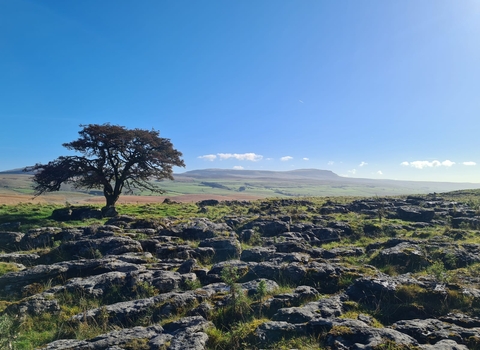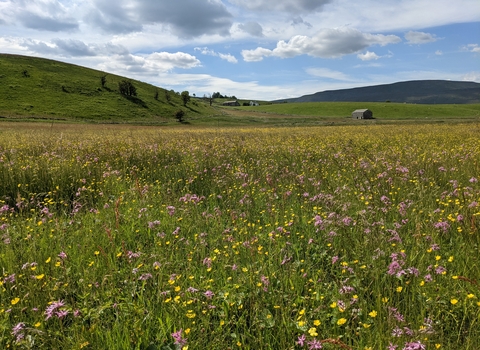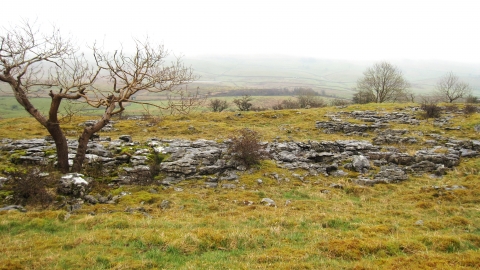
Brae Pasture Nature Reserve
Location
Know before you go
Dogs
on public footpath only please
When to visit
Opening times
Open at all times. We recommend a 1 hour quick trip for this reserve however, for a prolonged outing combine with other nearby Ingleborough reserves.Best time to visit
JuneAbout the reserve
It may only cover two fields, but Brae Pasture is home to 150 plant species. This is thanks to a variety of habitats including limestone pavement, grasslands and a wooded ravine. The rare Alpine bistort grows here, along with Oeder’s apple moss, so called because its capsules look like miniature apples. Other notable species include rock-rose, blue moor grass, bird’s-eye primrose and frog orchid. The numerous butterflies include northern brown argus and dark green fritillary. Breeding birds include meadow pipit, redstart and skylark, bring a pair of binoculars if you have them!
Contact us
Environmental designation
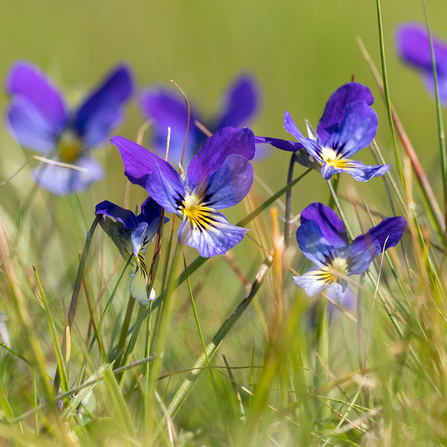
Mountain Pansies - (C) John Potter
New heights for nature
Ingleborough and its iconic foothills are the last stronghold for rare and threatened species that are found nowhere else in the world.
We must protect, restore and reconnect this iconic landscape today before these species are lost forever.
About
Brae Pasture is located on the edge of the Ingleborough Massif, therefore, where limestone is exposed botanical diversity is greatly influenced by the calcareous bedrock. However, elsewhere on site where there are thicker soils neutral and acid grassland can be found. A wooded gill is located along the northern boundary of the site, which surrounds a temporal watercourse that runs along the base of the boundary stone wall.
Whilst only covering two fields, Brae Pasture has an impressive variety of habitats including limestone pavement, acid grassland, calcareous flush and a wooded cliff gill. Home to over 150 plant species, several notable ones grow here including the uncommon Oeder’s apple moss (so called as its capsules looks like miniature apples) and the rare Alpine bistort. Early purple orchid, violet, primrose and yellow rock-rose provide colour throughout spring and summer.
In spring curlew can be heard calling and cuckooflower and barren strawberry can be seen in flower. In summer a range of butterflies will be in flight including common blue over the grassland. Meadow pipit and skylark will be nesting on site. In autumn harebells will be in full flower.
There is evidence of human settlement in the reserve, which can be seen today as a network of ditch and field boundaries. These are probably of a late Iron Age or Romano-British date and form one of a number of settlements from Ribblehead to Horton Village.
Seasonal highlights
- Spring: Plants - Cuckooflower; Barren Strawberry; Bluebells; Early Purple Orchid
- Summer: Plants - Rock-rose; Alpine bistort; Yellow Rattle; Invertebrates - Common Blue Butterfly, Northern Brown Argus; Birds - Redstart
- Autumn: Plants - Harebell
- Winter: Birds - Stonechat, Fieldfare, Redwing
Directions
Public transport
The nearest train station is in Horton-in-Ribblesdale.
By car
Head north from Horton-in-Ribblesdale village on B6479. Pass under a railway bridge and travel on for ¾ mile. Once you pass a public footpath sign pull in shortly on your left. Access to the nature reserve is via a stone stile along the public footpath.
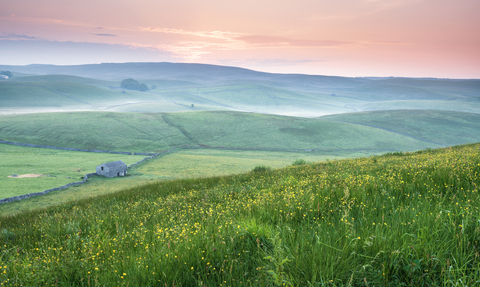
Ashes Pasture - (C) John Potter

